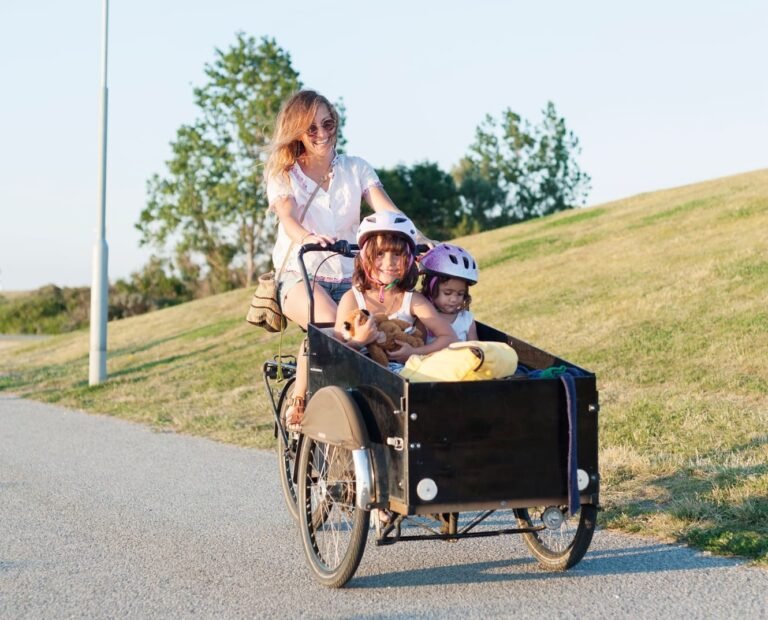A teherbringák egyre népszerűbb megoldássá váltak a városi közlekedésben, mivel környezetbarát és hatékony eszközt kínálnak az áruk és utasok szállítására. E járművek biztonságának, megbízhatóságának és teljesítményének biztosítása érdekében elengedhetetlenek az egységesített előírások. Az egyik ilyen szabvány az EN 17860, amelyet a teherbringák tervezésének és használatának különböző szempontjaira dolgoztak ki. Ez a cikk az EN 17860 szabvány átfogó megértését kívánja biztosítani a következő kérdések megválaszolásával:
1. Mi az EN 17860, és melyik ország szabványa ez?
Az EN 17860 európai szabványt az Európai Szabványügyi Bizottság (CEN) dolgozta ki a CEN/TC 333 műszaki bizottság keretében, amely a ciklusokkal foglalkozik. Mivel európai szabvány, nem specifikus egyetlen országra, hanem az Európai Unió (EU) és az Európai Szabadkereskedelmi Társulás (EFTA) valamennyi tagországában történő elfogadásra szánták. Ez a szabvány iránymutatásokat és követelményeket határoz meg a teherhordó kerékpárok, közismert nevükön teherbringák kialakítására, biztonságára és teljesítményére vonatkozóan.
2. Miért vezették be ezt a szabványt?
Az EN 17860 bevezetését a teherbiciklipiac gyors növekedése és a biztonságot és teljesítményt Európa-szerte garantáló egységes keretrendszer szükségessége indokolta. Az EN 17860 szabványt megelőzően a gyártók elsősorban a nemzeti szabványokra, például a német DIN 79010:2020 szabványra támaszkodtak, amelyek bár átfogóak voltak, nem voltak alkalmazhatók az EU összes országában. A harmonizáció hiánya következetlenségekhez vezetett a biztonsági és teljesítménykritériumok terén. Az EN 17860 célja, hogy egységesítse ezeket a szempontokat, megkönnyítve a biztonságosabb kialakítást, elősegítve a fogyasztói bizalmat, és támogatva a teherbiciklik szélesebb körű elterjedését mind a személyes, mind a kereskedelmi használatban.
3. Mely járműtípusokat célozza meg elsősorban?
Az EN 17860 a teherbiciklik széles skáláját öleli fel, különböző konfigurációkat és kapacitásokat érintve. A szabvány több részre oszlik, amelyek mindegyike a teherbringák meghatározott típusaira összpontosít:
• Egyvágányú hordozóciklusok: Ezek kétkerekű teherbringák, amelyeket áruk vagy utasok szállítására terveztek.
• Többsávos hordozóciklusok: Ebbe a kategóriába tartoznak a három- vagy négykerekű teherbringák, amelyek nagyobb stabilitást és teherbírást biztosítanak.
• Nehézsúlyú, többvágányú hordozóciklusok: Ezeket a kerékpárokat jelentős terhelésre tervezték, akár 650 kg súlyt is elbírnak, így alkalmasak a nehéz kereskedelmi alkalmazásokhoz.
• Elektromosan segített hordozóciklusok: Elektromos rásegítéssel felszerelt teherbringák, amelyek különösen hasznosak nagyobb terhek szállításakor vagy kihívást jelentő terepen való navigáláskor.
• Pótkocsik: Kerékpárokhoz rögzíthető teherpótkocsik, amelyek növelik a teherbíró képességüket.
Azáltal, hogy az EN 17860 szabvány ezt a széles spektrumot fedi le, biztosítja, hogy a biztonsági és teljesítményszabványok a különböző teherbicikli-konstrukciók és felhasználási módok esetében is érvényesek maradjanak.
4. Mi az EN 17860 szabvány fő tartalma?
Az EN 17860 több részből áll, amelyek mindegyike a teherbiciklik tervezésének és funkcionalitásának különböző aspektusaival foglalkozik. A legfontosabb összetevők a következők:
• 1. rész: Fogalmak és meghatározások: Közös fogalomtárat hoz létre a hordozóciklusok tervezésének, összeszerelésének és tesztelésének biztonsági és teljesítménykövetelményeivel kapcsolatban.
• 2. rész: Könnyű, egyvágányú hordozó kerékpárok - mechanikai és funkcionális szempontok: A kétkerekű teherbringákra vonatkozó mechanikai és funkcionális követelményeket határozza meg, beleértve olyan szempontokat, mint a váz szilárdsága, a fékrendszerek és a stabilitás.
• 3. rész: Könnyű, többvágányú hordozó kerékpárok - mechanikai és funkcionális szempontok: A három- vagy négykerekű teherbiciklikre összpontosít, részletezve a biztonságos működésük és tartósságuk biztosításához szükséges követelményeket.
• 4. rész: Nehézsúlyú többvágányú hordozó kerékpárok - mechanikai és funkcionális szempontok: A nehéz teherbírású teherbiciklik sajátos igényeit elégíti ki, hangsúlyt fektetve a szerkezeti integritásra és a teherbíró képességekre.
• 5. rész: Elektromos szempontok: Az elektromos segédmotoros kerékpárok elektromos alkatrészeinek ismertetése, beleértve a motor energiagazdálkodását, az akkumulátor biztonságát és az elektromos áramkörök követelményeit.
• 6. rész: Személyszállítás: Iránymutatásokat ad az utasok szállítására tervezett teherbringákra, biztosítva a biztonsági funkciókat mind a motoros, mind az utasok számára.
• 7. rész: Pótkocsik: A kerékpárokhoz rögzítendő teherpótkocsikra vonatkozó biztonsági és teljesítményszabványokat határozza meg.
Minden egyes rész részletes követelményeket és vizsgálati módszereket tartalmaz a megfelelőség értékeléséhez, biztosítva, hogy a teherbringák Európa-szerte egységes biztonsági és teljesítménykritériumoknak feleljenek meg.
5. Milyen egyéb előírások vonatkoznak a teherbiciklikre az EU-ban?
Az EN 17860 szabványon kívül az EU-ban más szabványok és előírások is vonatkoznak a teherbringákra:
• DIN 79010:2020: Német nemzeti szabvány, amely az áru- és személyszállításra használt szállító- és teherforgalmi kerékpárokra vonatkozó követelményeket és vizsgálati módszereket határozza meg. Bár átfogó, elsősorban Németországon belül alkalmazható.
• EN 15194: Ez az európai szabvány az elektromos meghajtású kerékpárokra (EPAC) vonatkozik, és meghatározza az elektromos motorral felszerelt kerékpárok biztonsági követelményeit és vizsgálati módszereit. Elsősorban azonban a városi és túrakerékpárokra összpontosít, és nem foglalkozik teljes mértékben a teherkerékpárok egyedi jellemzőivel.
• ISO 4210: A kerékpárok biztonsági követelményeit meghatározó nemzetközi szabvány, amely olyan szempontokra terjed ki, mint a váz tartóssága és a fékezési teljesítmény. Az EN 15194 szabványhoz hasonlóan inkább a normál kerékpárokra vonatkozik, és nem tartalmazza a teherbringák speciális igényeit.
Az EN 17860 szabvány kidolgozása és elfogadása ezeket a hiányosságokat hivatott pótolni egy olyan szabvány létrehozásával, amely az Európában használt teherbiciklik egyedi tervezési, biztonsági és teljesítménybeli szempontjaival foglalkozik.






